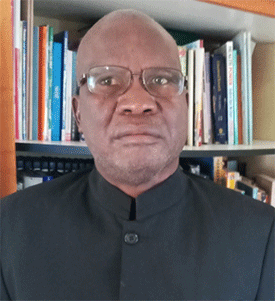The history of the Namibian liberation struggle cannot be complete without the contributions and sacrifices made by the sons and daughters from Chixhu-Sesheke-Singalamwe corridor.
No part of the Zambezi region (then Caprivi) made and endured such atrocities and murders in 1968 at the hands of the South African security forces than this corridor.
Yes, many people in the region contributed to the liberation struggle, but the large numbers of people can testify to the involvement of this part of the region who fled and ended up in exile.
After the formation of the Caprivi African National Union (CANU), and subsequently, the arrest of the liberation struggle icon, Brendan Kangongolo Simbwae, and the flight of the Muyongo group to Mambova, Zambia, political tension ensued, which was followed by political stagnation.
Swapo was not known in the region by that time. After the CANU-Swapo merger, PLAN fighters infiltrated the corridor from Kalobolelwa, Zambia.
The purpose of the entry was to mobilise and inform the region about the merger of the two parties and appeal for support to fight the common enemy, which was the South African government.
During this encounter with the local people, the freedom fighters were rendered assistance of food and information of the whereabouts of the South African Security Forces.
Tobias Hainyeko took refuge among some people in this area before travelling to Katima Mulilo by Witwatersrand Native Labour Association (WENELA) bus, driven by Maxwell Kulibabika, where he was eventually shot by a combined force of both Black and White police officers on a platoon operating on the Zambezi River.
Nightmare later started when Finaughty’s shop was broken into by the freedom fighters one night around June 1968. The local people became the scapegoat and were blamed for feeding and harbouring the freedom fighters.
Maxwell Kulibabika was subsequently intercepted and arrested in the middle of no-way at Mabanga, tortured and killed on 26 October 1968 in Katima Mulilo Police cells. Upon learning the barbaric and cruel manner in which Kulibabika was murdered and the subsequent harassments, shootings and killings which followed, whole villages of Chixhu, Sesheke, Kongola, Kalubi and Singalamwe fled into exile in fear of their lives and joined the liberation struggle. Sesheke village in 1968 was so big but after this exodus, the whole settlement was reduced to only three courtyards by 1977.
The United Nations through the Zambian Government ferried these refugees and were resettled at Mayukwayukwa, Nyango and Maheba Refugee Camps. The pain of losing their homes was unbearable, as Ali Mazrui (1986) remarks about any form of fleeing one’s country in ‘The Africans: A Triple Heritage,’ “for the people to leave their homes, their friends and their burial places, things must have been terribly wrong”.
Indeed, it was terrible, as many of these people did not come back after more than twenty years in exile. It was some of the children of these people which the former Honourable Prime Minister Nahas Angula used to open the first primary school in exile. In exile, many of them became gallant fighters on the battlefield and others contributed in many ways.
With the repatriation of returnees in 1989, those who survived the exile and its hardship could not even equate to half of the initial population of the 1960s in those villages. Chixhu village even went to the extent of extinction that it failed to be resuscitated up to now. What happened to all those people? Many of them sacrificed their lives for the sake of liberating Namibia from colonial and racist rule.
One may ask whether the peanuts benefits they are receiving today are worthy of their sufferings as compared to the pain inflicted by the South African racist regime in 1968. The majority of these people have no access to adequate services such as sanitation, decent houses, electricity and even better education for their children. Although Government has rewarded them with veteran grants in monetary terms and houses for few who qualified, their contribution is far greater than what they are receiving.
Sadly, the majority of these victims are invisible in the echelon of power. For more than thirty-one years of Independence, none of these people and their descendants ascended into a cabinet post despite that the new generation possesses educational qualifications, which can easily usher them into those positions. This scenario smells of insensitivity of the highest order, on the part of the political dispensation, as this situation could have been addressed long back.
In a fair situation, the Chixhu-Sesheke-Singalamwe area deserved a minister in every cabinet because of their sacrifices during the war of liberation. Despite the powers of presidents by single-handedly picking any person for the party list, the Namibian heads of state have deliberately and blindly skipped these people for unknown reasons, as they have not wavered. Political affirmative action policy has also failed this corridor.
The failure to honour these people and others, who sacrificed so much for the freedom of Namibia, is a sign of non-gratitude and insensitivity on the part of the political leaders of the ruling party. The Chixhu-Sesheke-Singalamwe corridor has been in the cold for too long and it is time to consider them for a ministerial portfolio.


